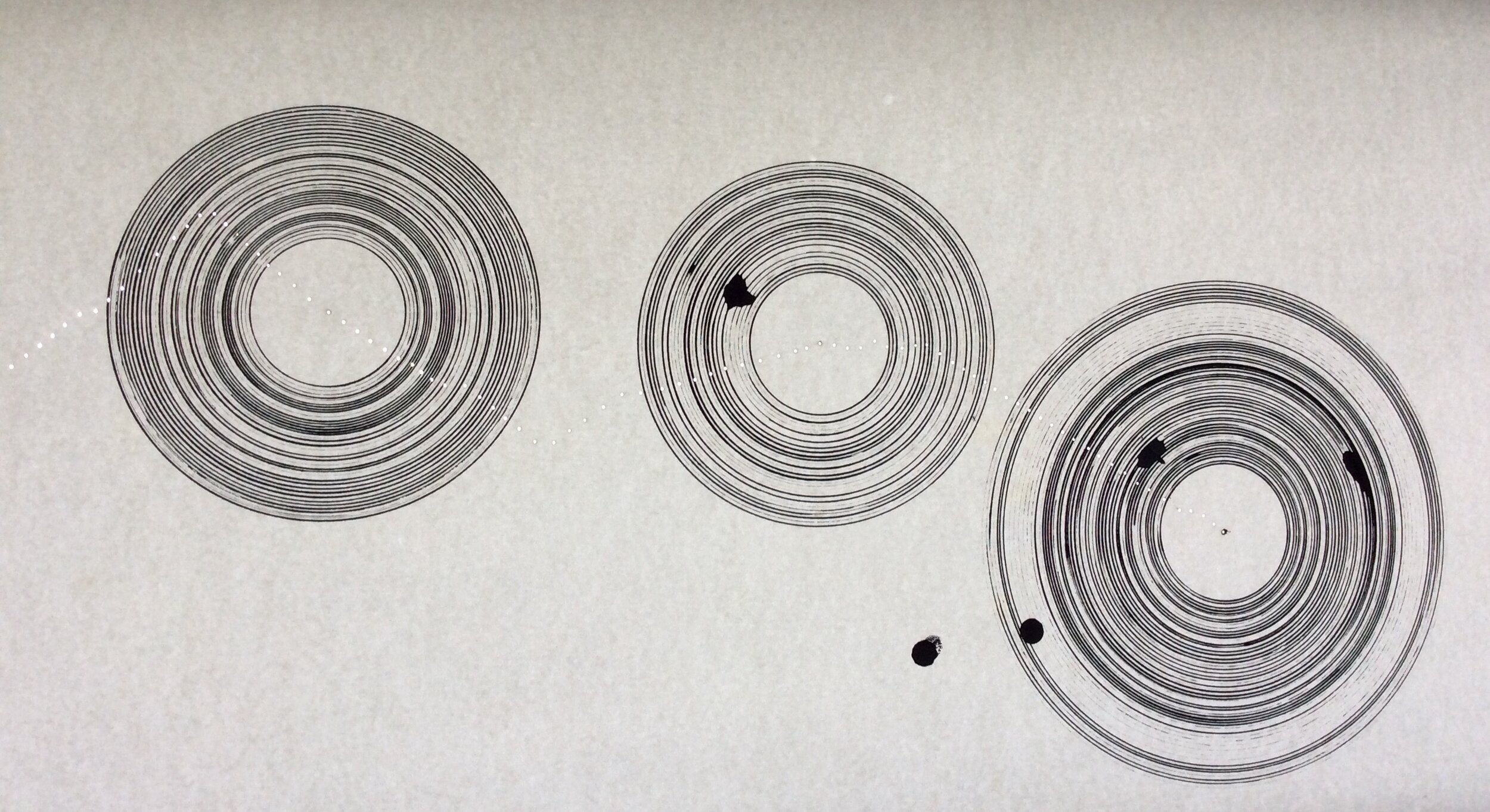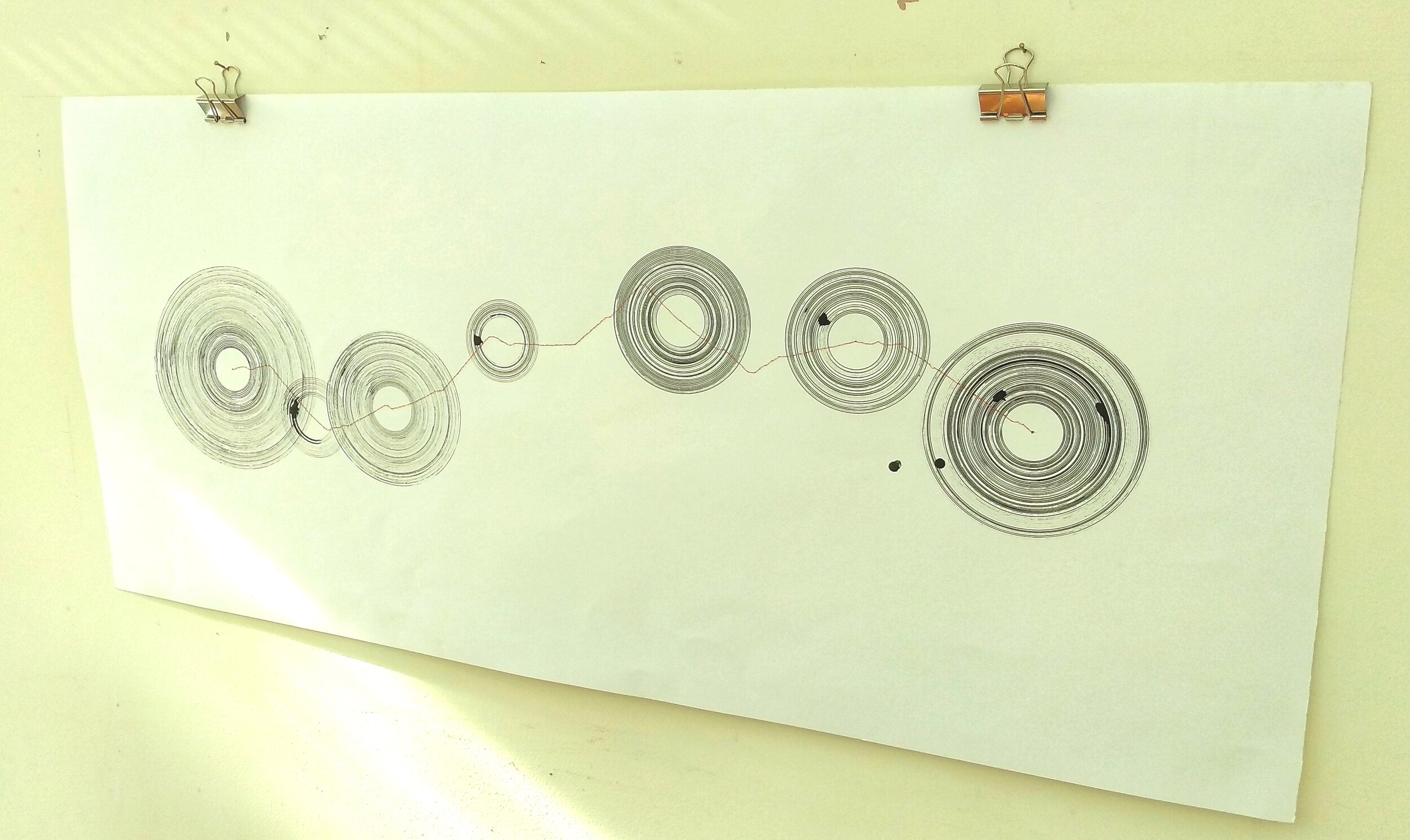In my MFA work based on Anglesey’s disused Amlwch railway line, I have reached a point where I am interested in the idea of memory and its subjectivity; and in the presentation and preservation of remembered information. My subject meditates on the past and nostalgia, and reflects upon the fragile distinction between remembering and forgetting.
Memories can grow, change, alter and be lost. My most recent experiments have brought me towards this awareness of the subjectivity and fallibility of memory. Certain methods (especially ink drawing with a dip pen) seem well suited to that because of the scratchy and uncertain nature of the line they can produce at times.
Using as my information sources from a booklet and fundraising poster produced by Amlwch Central Railways, I have found the following information, which I now wish to consider:
The gradient profile of the line (its ups and downs along its route) across the island of Anglesey.
Numbers of railway wagons that each station yard can accommodate.
The image above is an extract that acts as a record of the drawing’s planning (calculating scales and positions), and also its execution: (random dip pen strokes recording my sometimes fraught attempts to get the ink flowing to my satisfaction after each reloading of the nib from the ink bottle). So there is a co-mingling of planning, process and performance in this record of my own preparations.
There always seems to be other work behind a work. For me, drawing is the perfect way to explore that, both art historically and practically.
Is this important or valuable information? Who is to say? For me, it is valuable information precisely because it is so marginal. At risk. It could easily fall completely out of human memory. This fragility and contingency is what interests me most about it. How can I attempt to remember it?
Working on the piece in response to this:
When I started this piece, I did not bargain for the process of using a dip pen in a compass to be quite so tricky, uncertain and even messy:
In my mind, I was initially imagining something cleaner and more precise; perhaps the use of a “draughtsmanlike” tool such as compass prompted me in this direction. (I briefly wanted to be a draughtsman when I was younger, back in the day when the profession still existed). I was prepared for the scratchiness of the line but not for the occasional huge blot.
My initial reaction to these blots was that they they made the drawing a failure, but then I thought again and pushed onwards. What if these ink blots exemplify that very fragility, mutability and uncertainty that I was considering. I decide to work through them and finish the drawing. (There are also occasional such blots and missteps in my copper ink drawing “A Crack In The Record”.)
In this above photo, you can see the trace of the railway gradient profile line, pierced with a needle in advance so that I can stitch the copper thread into it. Copper remains a “leitmotif” material in this project. (“Leitmotif” is a musical term: on the path ahead I am thinking about musical notation – and of course music, both as text and sound.)
Some of the circle sets are finer and clearer than others, as I warm to the task and become more settled in my process, but there are always blots, always elements of “information” that are clearer or better executed than others.
I feel like allowing elements of chance into the drawing take it into something more than just a piece of “illustrative” draughtsmanship or an (encoded) infographic. In other words, the drawing is a record of its own hesitant development. I like that “in progress” quality in this piece. I think it chimes with the “in progress”, “about the journey as much as the destination”, “start and see how it goes” nature of the railway preservation/restoration effort itself. I think back to Tim Ingold, and the method of learning by doing and not the other way around.
Final Piece. “The Fallibility of Human Memory”.
Ink and copper thread on paper, H400mm X W800mm





